
![]()
![]()
On this page you can see some pictures from my valiant life as a gladiator. It all started on a lovely June weekend 2754 ab urbe condita in the archeological park of Xanten, a.k.a. Colonia Ulpiana Traiana. The famous historian Marcus Junkelmann is the leader of the Familia Gladiatoria Pulli Cornicinis, and he is a good cook, too, which also comes in very handy. Mulsum and puls have kept most of us alive so far.
In antiquity gladiators were professionally exercised to achieve maximum performance in the arena. Mostly retired gladiators, magistri or doctores were working in this function. Medical care was excellent, since a gladiator who was not fit was really not worth watching. Every munus had several parts. There were fights against beasts, mythological battles and, of course, public executions. Educated Romans like Seneca refrained from watching the latter, because he considered them artless slaughter serving no didactic purpose. Gladiatorial fights, on the other hand, were highly esteemed by him. The manner in which gladiators faced death was thought to be the best exemplum of virtue.
"You must die erect and invincible. It is not important if we gain more days or even years in our life, but it does matter very much how we die. We were born in a merciless world." (Seneca: Epistulae 37,2)
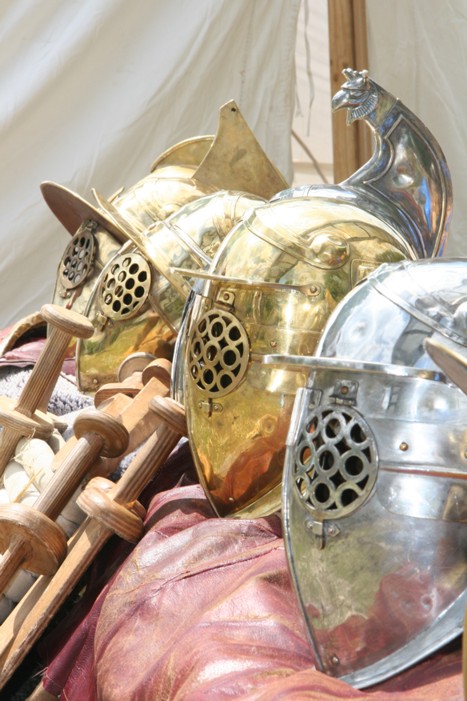
The gladiatorial part of a munus started with a pompa. First a music band enters the scene followed by several dignitaries, the gladiators and their retinue. (Yes, gladiators had their own personnel who helped them to get dressed in the arena. Since these fights were a lucrative job, the keeping of servants was not a problem for most of them).
The next picture shows some members of the Familia Gladiatoria Pulli Cornicinis. From left to right you can see a Hoplomachus, a Murmillo, a Harenarius (a servant), Dr Marcus Junkelmann, another Thraex, a Provocator, a Secutor and a Retiarius.
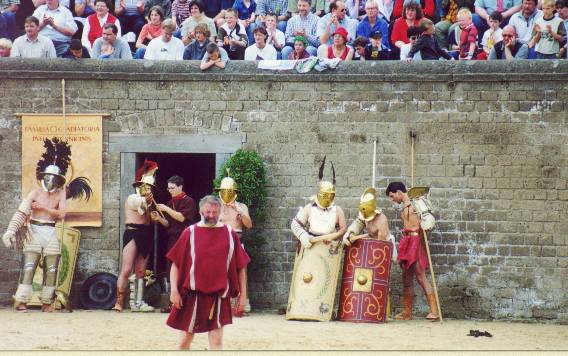
(From left to right (excluding the plain clothes people): Hoplomachus, Murmillo, Murmillo, Provocator, Secutor, Retiarius)
Fights were not a wild melee where every second someone died. This impression, reinforced by movies like Ridley Scott's Gladiator, is totally wrong. Gladiators fought strictly in pairs of two. Everything was regulated, the weapons, the armour; there were even referees, the summa rudis, and different leagues since there were fighters of different quality. There were several distinct types of gladiators (see above for examples) who always fought against another type. Thus a secutor would always fight a retiarius, but he would never strike his sword against a provocator.
The thraex carries a small shield, the parmula, a helmet, two long greaves, a manica on the right arm and a kind of padded trousers. As a weapon he has a sica, a curved sword considered an unfair weapon by honest Romans. Here the thraex, on the left, fights against a murmillo. The murmillo's shield is much larger and can be a terrible weapon, too. But this is balanced by the fact that he only has one short greave on his left leg and that he has not got padded trousers.
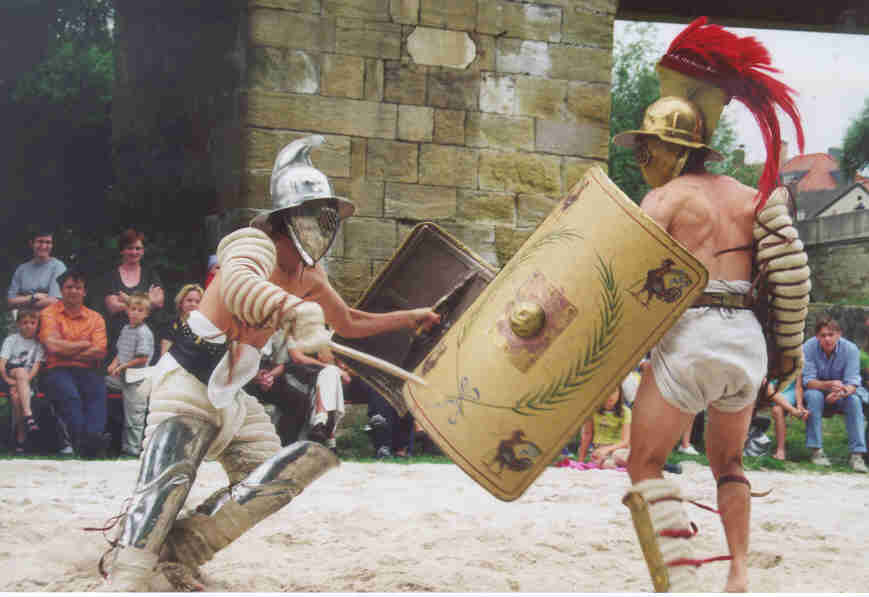
Sometimes a thraex also fought against a hoplomachus, who, with his small shield and lance, takes after a Greek type of warrior. The thraex here uses a gladius, the Roman military sword, since the sica was broken in an earlier fight.
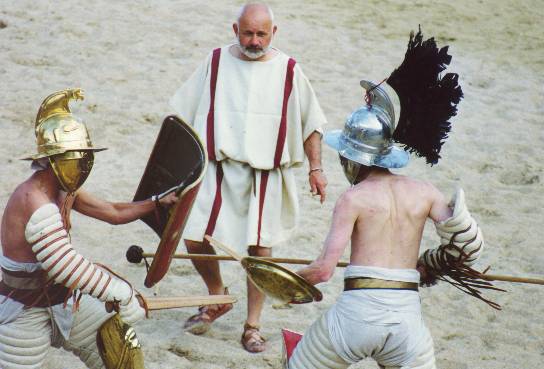
|
Victory (thraex vs. hoplomachus) and |
Defeat (hoplomachus vs. thraex) are often very close companions, but defeat does not necessarily mean that someone has to die. Only one in ten fights ended with either of the gladiators dead. |
|
|
|
The following life dates were collected from tombstones in Ephesos, Turkey:
| Age: 21, four years of training, died in the fifth fight |
| Age: 22, 13 victories (did not die in the arena) |
| Age: 27, survived 15 munera, died in the sixteenth fight |
| Age: 30, 34 fights, 21 victories, 9 draws, 4 defeats (always allowed to live on) |
| Age: 60, freed with a pension |
| Age: 99, freed with a pension |
And eating and drinking are also, of course, part of the hard life.
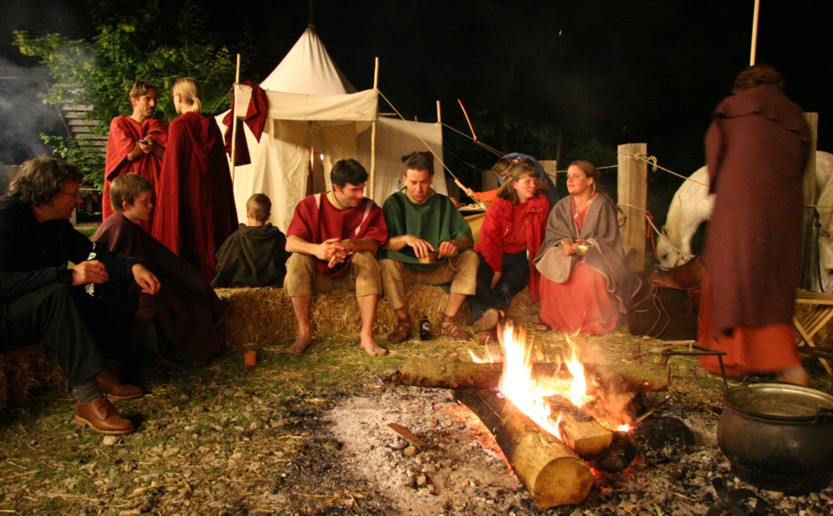
Beautiful girls wait for the victorious fighter. Sometimes even women of doubtful character show their interest.

There is no questioning it. Gladiators were the sport superstars of their time. Lovesick teenagers wrote graffiti on the walls of Rome and everywhere else in the empire:
Cresces retiarius puparum nocturnam (The retiarius Cresces who catches the young girls at night)
Suspirium puellarum, traex Celadus (The sigh of the girls, the traex Celadus)
Definitely the most spectacular pairing was the battle between the heavily armed secutor (right) against the retiarius whose only armour consists in a manica and swift feet. But the fight is not as uneven as it seems, sometimes cunning and dodging win over sheer power and iron.

Not always the net is as powerful a weapon as it is here. Normally the trident decides about life and death.
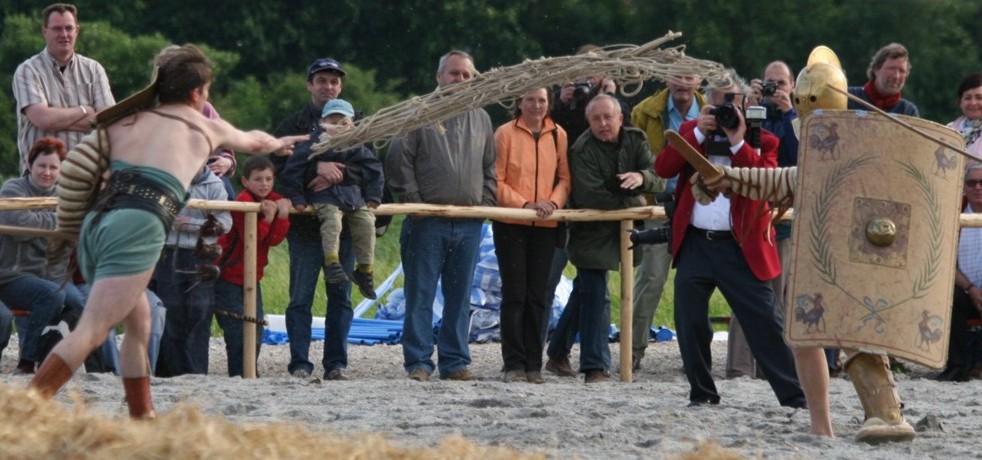
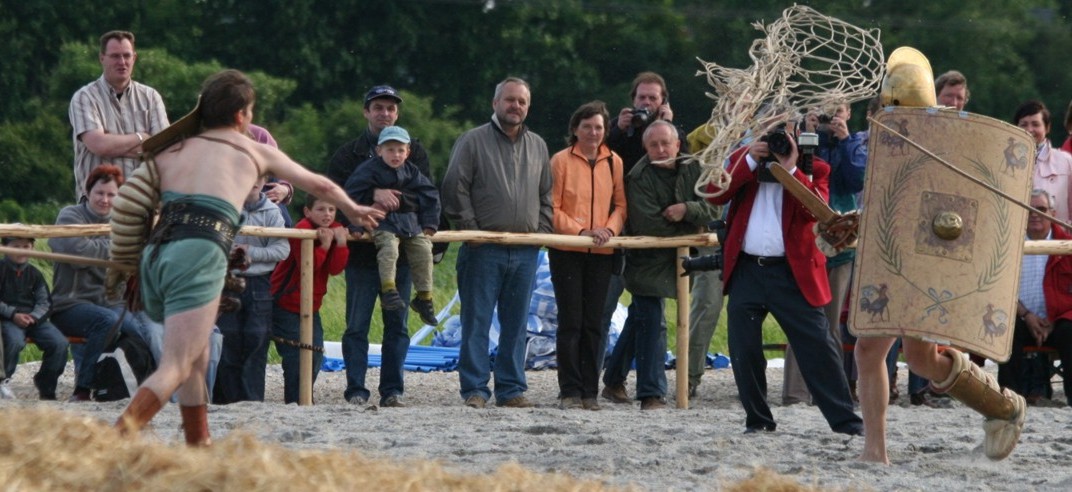



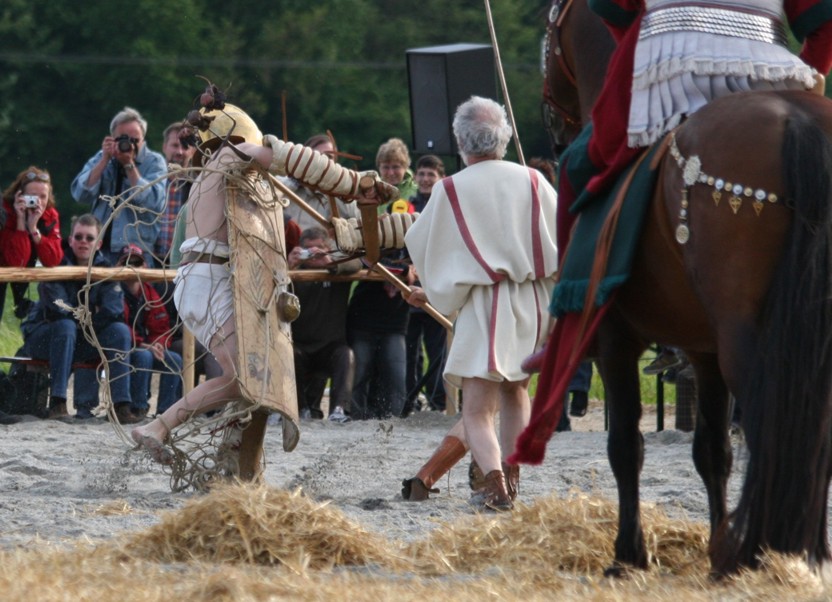
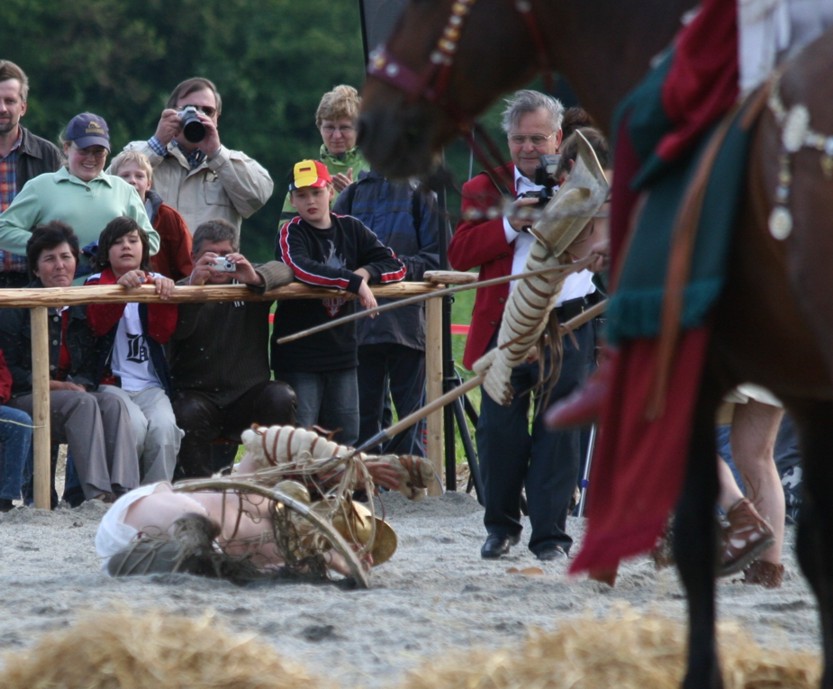
Some videos can be found on my YouTube channel.